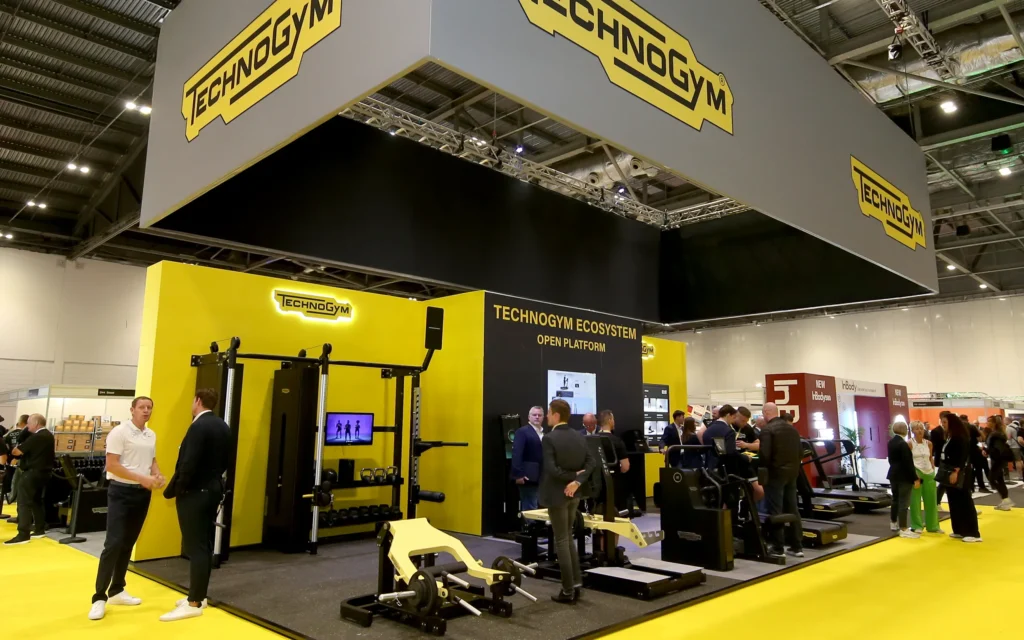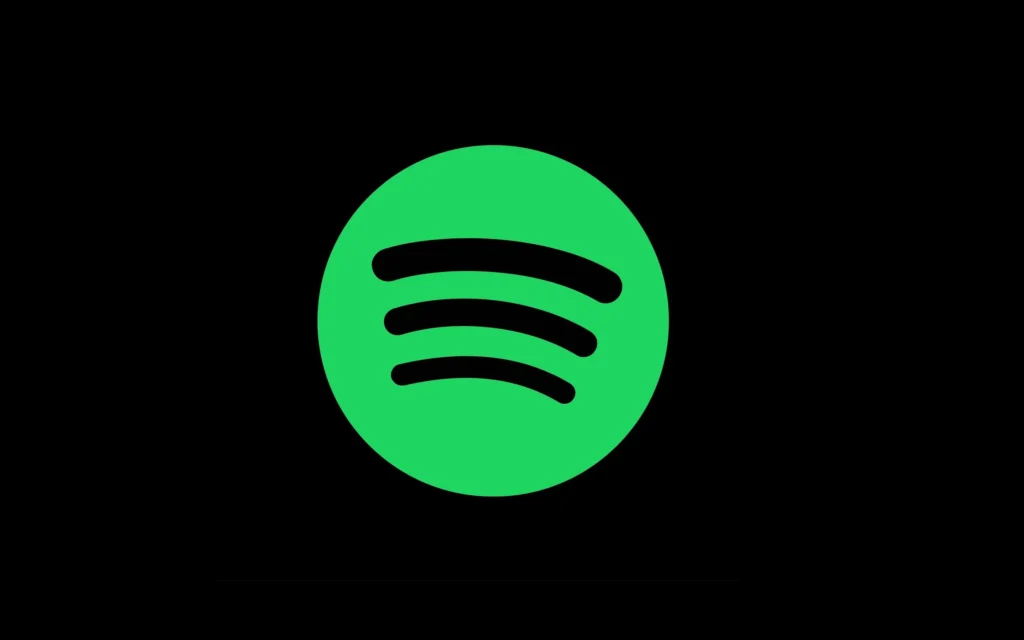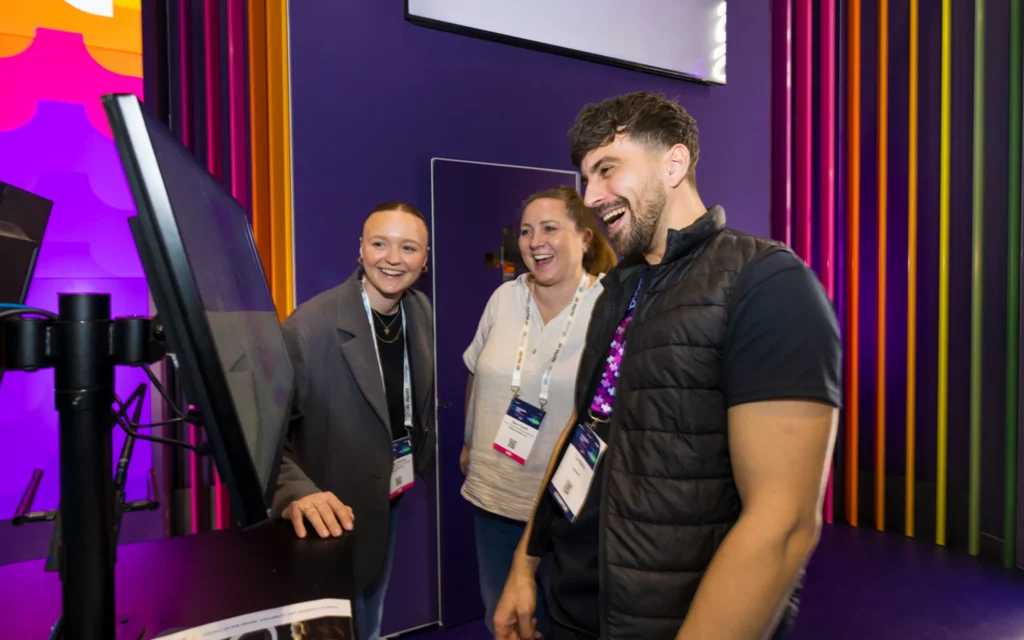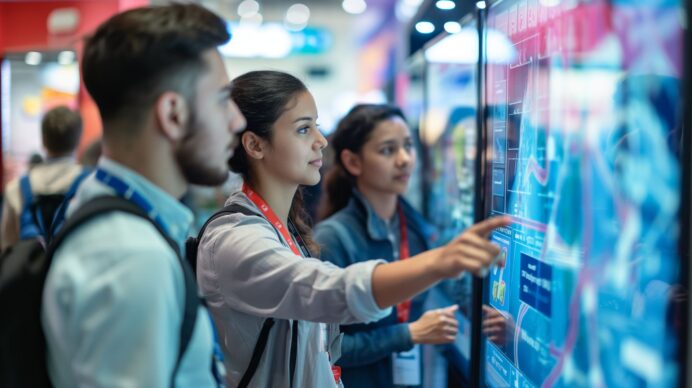In today’s fast-paced, ever-evolving market, brands can’t afford to simply exist – they need to truly resonate and build loyalty with their audience, or they’ll quickly become extinct. That’s where brand activation steps in.
At its core, brand activation is the strategic process of driving consumer action through immersive experiences that bring a brand to life. It’s not just about awareness; it’s about creating bold, memorable interactions that inspire loyalty and push boundaries.
In this blog, we’ll discover what brand activation truly is, explore why it’s critical for business growth and uncover strategies to make your brand stand out in a crowded, competitive landscape. Ready to disrupt the ordinary? Dive in with Tecna.
Table of contents
What is brand activation?
Why brand activation matters
The core elements of successful brand activation strategy
Types of brand activation campaigns
Real-world examples of impactful brand activations
How to develop a brand activation strategy that works
Common mistakes to avoid in brand activation
Final thoughts
Questions? Let’s get you the answers.
What is brand activation?
Brand activation is the exact boiling point where a brand stops being just a name and starts becoming an experience. It’s a bold, dynamic marketing strategy designed to forge authentic connections between brands and consumers. Unlike traditional marketing, which often relies on passive messaging, brand activation invites audiences on an adventurous journey; one that’s interactive, immersive, and unforgettable.
It’s about creating unconventional and engaging experiences – whether through live events, digital marketing campaigns, or experiential marketing – that inspire people to not just notice a brand but to trust and embrace it. This isn’t about shouting louder, it’s about connecting on a deeper level.
Marketing expert Les Binet puts it simply:
Really smart marketers build the brand long-term and activate it efficiently. Building the brand long-term builds up preference for the brand, and then activation converts that preference efficiently into cash.
Why brand activation matters
Consider this: a standard digital advert might catch a consumer’s attention for a fleeting moment before they scroll past. Now, compare that to an immersive pop-up event where the same consumer can interact with the product, engage with brand ambassadors, and share their brand experience on social media. Which leaves a lasting impression? Which sparks a connection they’ll remember and talk about?
Brand activation taps into the power of human emotion and interaction. It creates meaningful moments that drive not just awareness but genuine loyalty. When consumers feel connected to a brand through real experiences, they’re not just more likely to buy, they become advocates, sharing their enthusiasm within their own networks.
In a world where attention is currency, brand activation doesn’t just compete, it seeks to captivate. That’s why it matters. Brands need to be increasingly creative to cut through the noise.
The core elements of successful brand activation strategy
Sounds like magic, doesn’t it? Well it doesn’t have to be! Let’s break through the key elements of brand visibility and activation campaigns.
It all begins with Strategic Planning, where identifying clear objectives is crucial. Brands must define what success looks like, understand their target audience deeply, and craft compelling concepts that resonate. This isn’t about guesswork; it’s about carefully targeting campaign.
Next to creative concept, comes Creative Execution, where ideas are brought to life through immersive experiences. Here, brands push limits – designing engaging activations, ensuring seamless logistics, and driving powerful promotion strategies. It’s where creativity meets uncompromising attention to detail, turning concepts into memorable moments.
Finally, Evaluation and Optimisation closes the loop. Measuring key performance indicators (KPIs), analysing consumer feedback, and leveraging data insights enable brands to refine and evolve. This fearless commitment to continuous improvement ensures that every activation not only makes an impact but leaves a lasting legacy.
Types of brand activation
Now we know the core elements of a brand activation campaign. Let’s examine some different ways of sparking interest in your brand, with examples to go with them.
Experiential marketing
Experiential marketing creates unforgettable real-world experiences that engage consumers directly. Think of Nike’s “House of Innovation” stores – spaces that blend physical and digital experiences, allowing customers to customise products, test innovations and connect with the brand on a deeper level. The result? A lasting emotional bond that extends beyond the store. These activations aren’t just events; they’re immersive journeys that place consumers at the heart of the brand story. When done right, experiential marketing triggers all five senses, creating memories that are hard to forget and fostering brand loyalty that lasts.
Below is an example of a project we worked on, focusing on physical experiences.

Product sampling and free trials
Product sampling is powerful because it removes the barrier of uncertainty. Consider Lush Cosmetics, which offers generous in-store samples, encouraging customers to experience products first hand. This tactile engagement drives conversions and builds brand trust.
But it’s not just about handing out free samples of products. The key lies in creating an experience around the sample. Think of interactive booths at events, where consumers can engage with brand ambassadors, learn about product benefits and connect emotionally with the brand story.
In-store brand activations
In-store activations transform shopping into an adventure. Apple’s flagship stores, for instance, are more than retail spaces, they’re hubs for workshops, product demos and personalised customer support.
These activations blur the line between shopping and entertainment. Whether it’s a live product demo, an interactive display, or even hosting exclusive events within the store, the goal is to create a space where consumers don’t just shop. Instead the goal is create somewhere they can experience, engage and form emotional connections with the brand.
Digital and social media activations
Digital activations amplify reach through interactive content, through influencer marketing, collaborations and viral campaigns. A prime example is Spotify Wrapped, which turns user data into shareable content. This annual activation generates millions of social media impressions, reinforcing brand loyalty through personalisation. Digital activations thrive on interactivity and shareability. Whether it’s launching a hashtag challenge, creating gamified content, or leveraging live streaming; the key is to create digital moments that feel personal, engaging, and worth sharing, turning everyday users into passionate brand advocates.

Event marketing and sponsorships
Event marketing builds brand presence through immersive environments. Red Bull’s sponsorship of extreme sports events, like the Red Bull Air Race, perfectly aligns with its bold, adventurous identity. These activations create emotional connections that resonate long after the event ends. Successful event marketing isn’t just about showing up; it’s about standing out. This could mean hosting interactive booths, creating VIP experiences, or integrating digital technology to enhance audience participation and deepen brand engagement.
Real-world examples of impactful brand activations
- Coca-Cola’s “Share a Coke” Campaign: Personalising bottles with names sparked a global phenomenon, increasing sales by 2% in the U.S. alone. The campaign’s brilliance lay in its simplicity – turning an everyday product into something personal and shareable.
- IKEA’s Sleepover Event: Inviting customers for a sleepover in-store created massive media buzz and strengthened brand affinity. The event transformed the mundane idea of furniture shopping into a unique, memorable experience.
- GoPro’s User-Generated Content Strategy: Empowering customers to share their adventures turned users into brand ambassadors, with millions of organic content pieces shared globally. This approach not only showcased the product in action but built an authentic, community-driven brand narrative.
How to develop a brand activation strategy that works
- Setting Clear Goals and KPIs: Define objectives like brand awareness, engagement rates, or lead generation. Use SMART goals to ensure clarity and focus. For example, instead of aiming to “increase social media presence,” set a goal to “boost Instagram engagement by 20% over the next six months.” Having measurable outcomes allows you to track progress and inform future marketing strategies effectively.
- Understanding Audience Insights: Conduct thorough market research to identify audience behaviours, preferences, and pain points. Use tools like surveys, focus groups, and social listening platforms to gather data. The more you know about your audience, the more tailored and effective your activations will be. Create detailed buyer personas to guide messaging and experience design.
- Selecting the Right Channels and Tactics: Choose platforms that align with your audience- whether it’s social media, live events, or influencer partnerships. For instance, if your target audience is Gen Z, focus on platforms like TikTok and Instagram, where interactive content thrives. Diversify tactics to maintain engagement across different touchpoints.
- Integrating Technology and Social Media: Leverage emerging technologies like AR, VR, and interactive content to enhance engagement. Augmented reality filters, virtual try-ons, and immersive online experiences can elevate brand activations, making them more memorable and shareable. Don’t forget to integrate social media strategies that encourage user-generated content, amplifying your reach organically.
- Monitoring, Measuring, and Iterating: Analyse performance data rigorously. Track metrics like engagement rates, conversion rates, event attendance, and brand sentiment. Use these insights to refine your strategies, identifying what works and what needs improvement. Continuous iteration ensures that each activation is more effective than the last.
Common mistakes to avoid in brand activation
- Lack of Clear Objectives: Without defined goals, activations can miss the mark. A vague objective like “get more attention” lacks focus. Instead, aim for specific outcomes such as “increase product trials by 15% during Q3.” Clear objectives guide strategy, execution, and measurement.
- Ignoring Audience Feedback: Engagement is a two-way street. Failing to listen to your audience can lead to missed opportunities for improvement. Use post-activation surveys, social media sentiment analysis, and direct feedback to understand what resonated and what didn’t.
- Focusing Solely on Short-Term Gains: Prioritising one-off activations without considering long-term brand relationships can limit growth. While immediate metrics like sales spikes are important, sustainable success comes from fostering brand loyalty and ongoing consumer engagement.
- Overcomplicating the Message: Simplicity drives clarity and impact. Trying to communicate too many messages at once can dilute your brand’s core value. A focused, concise message sticks with your audience and enhances recall.
- Neglecting Measurement: Data-driven insights are crucial for optimising future campaigns. Failing to set KPIs or analyse performance means you’re missing opportunities to learn and improve. Incorporate tools like Google Analytics, CRM software, and social media insights to track results effectively.
Final thoughts
Brand activation isn’t just a marketing tactic, it’s a transformative strategy that breathes life into brands. By fostering authentic connections, igniting emotions, and delivering unforgettable experiences, brand activation drives loyalty, advocacy, and growth. The brands that dare to innovate, embrace bold ideas, and put their audiences at the centre of their future marketing strategy are the ones that don’t just survive – they thrive.

When brands embrace the boldness of unique brand activation, they capture hearts and minds. And that’s where true brand power lives.
Want to stand out and push the possible? Talk to us.
Questions? Let’s get you the answers.
Here are some questions people would like answered about brand activation.
What is the main goal of brand activation?
The primary goal of brand activation is to create meaningful and memorable interactions between a brand and its target audience. It goes beyond just raising awareness; brand activation aims to inspire consumer action, drive sales, foster emotional connections, and build long-term brand loyalty. By engaging customers directly through experiential marketing, brands can leave a lasting impression that encourages repeat business and word-of-mouth referrals.
How does brand activation differ from traditional advertising?
Brand activation differs from traditional advertising in its focus on interactive engagement rather than passive consumption. While traditional advertising relies on one-way communication through channels like TV, radio, and print ads, brand activation encourages two-way interactions. This could include experiential marketing events, live demonstrations, social media campaigns, or pop-up experiences where consumers actively participate with the brand. The goal is to create personal, memorable and interactive experiences that deepen the connection between the brand and the consumer.
Can small businesses benefit from brand activation strategies?
Absolutely, small businesses can significantly benefit from brand activation strategies. In fact, creative and well-executed brand activations can have a substantial impact even with limited budgets. By focusing on authentic consumer engagement, small businesses can build strong community ties, increase brand awareness, and foster customer loyalty. Tactics such as local events, guerrilla marketing efforts, social media challenges, and partnerships with micro-influencers can deliver high returns without the need for large-scale advertising budgets.



